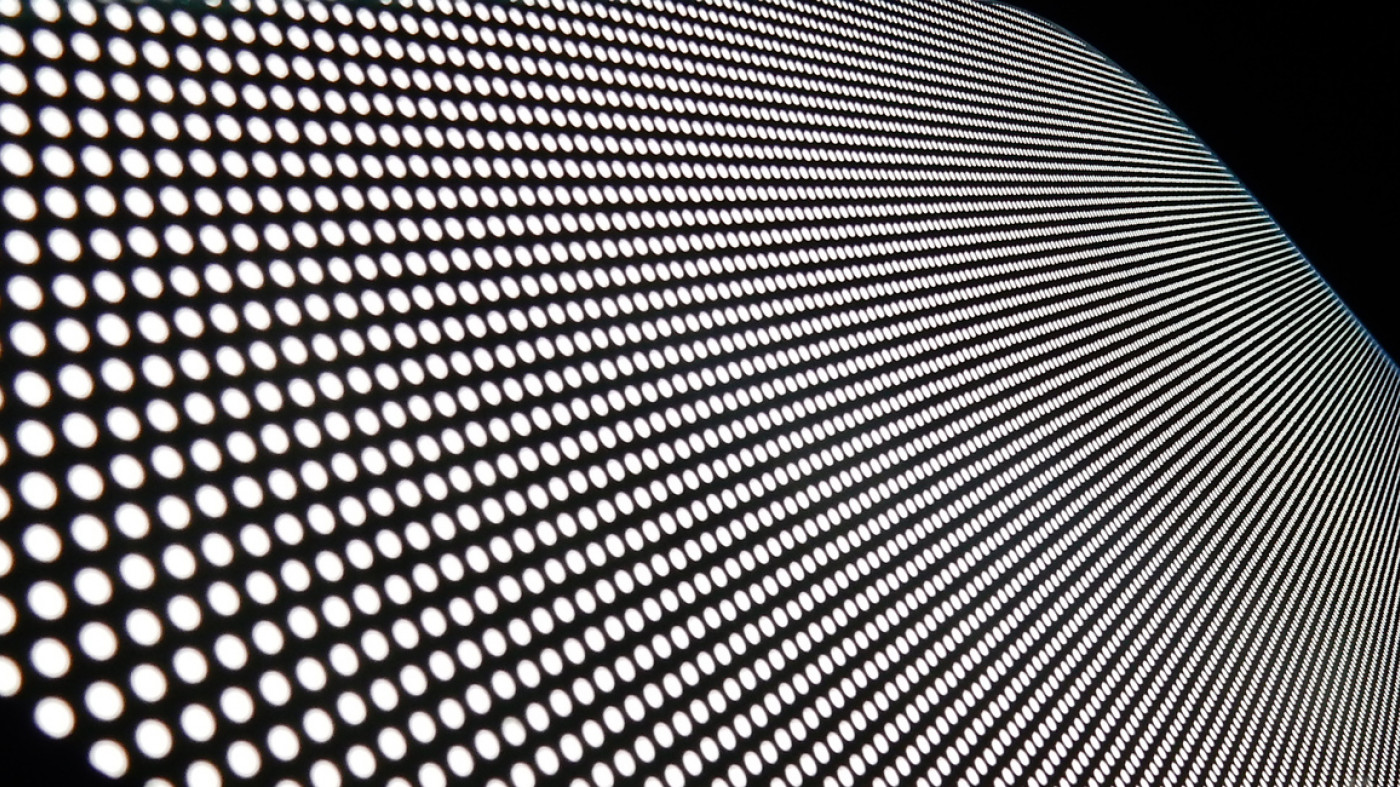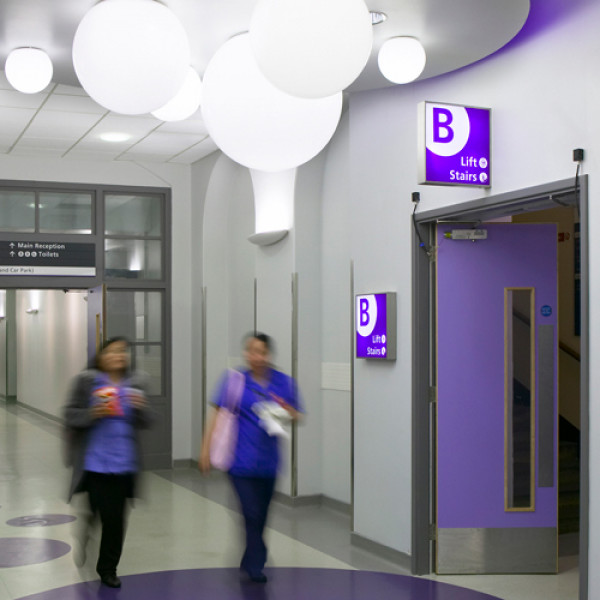Bringing The Drama
Influencing people around a space with light can be largely achieved using accents of light. A great example of this is the chandelier in No.1 King William Street – a commercial office space here in London – created by lighting design consultancy Pritchard Themis. Here, lighting substitutes signage as people are drawn to the central space’s striking feature. Nowhere is there a sign stating ‘reception’. Further to this the highlighted walls guide people to the lift lobby situated behind the reception.
Motivation Matters
While something visually arresting will draw attention, in a more general sense, how can the interplay of light and space form a navigation shorthand? There are lots of different, often competing, sources of light within the built environment, so creating a series of visual focal points is key, but that’s where the innate purpose of wayfinding steps in – to provide the clarity we need.
Wayfinding as a phenomenon is, and I quote: ‘the art of using landmarks, signage, pathways, and environmental cues to help first-time visitors navigate and experience a site without confusion[1].’ I believe additionally, if lighting is considered as a navigational tool, we have more creative and practical opportunities; as it can be used to support or substitute the current wayfinding components.
But to reiterate the earlier point, unless you’re using light for a specific purpose – such as to indicate a meeting point, it’s merely there for illumination, as with the King William Street chandelier, there’s nothing to stop a placemaking feature being both useful and memorable – such as this junction point created for the NHS, installed at St Guys and St Thomas Hospital.
In this particular installation, there’s a clear functional relationship between the entrance, signage, colour and the use of light, which in a large hospital environment is the perfect compromise between form, purpose, and navigation.
Lightbulb Moment
Ultimately, the more visually prominent a sign is or the more light used, the greater the impact it will have. A very obvious statement, perhaps – but why is this the case? The reason is that as a species, humans are inherently drawn to light. The brain gets 75% of its sensory information from visual stimulation; so when navigating a space, signage can only ever be enhanced when it uses light to best effect.
This was the subject of a study conducted at Clemson University in the US, in which subjects were shown a series of screenshots depicting 15 different versions of the same virtual environment – a long room with two corridors towards the rear. Some images showed either the left or right corridor lit with some others including an additional directional sign, pointing either left or right.
When only one corridor was lit the overall census was to travel towards the light. When one side was lit and an accompanying sign directing them the same way was added, all participants chose the lit corridor. Lastly but more intriguing, when one side was lit and a sign was pointing in the opposing direction, initially people travelled towards the lit corridor but took much longer to counter their decision and ultimately follow their conscious visual cue to take the opposite route.
The Right Direction
What this study shows is that when we have conflicting wayfinding information, it takes us longer to make a decision about which way to proceed. While this may sound like a minor inconvenience, in a large retail environment or a public building, sending visitors in the wrong direction can lead to all kinds of frustrations and even congestion issues. It also demonstrates that two complementary sources are more powerful than one. When there are both conscious and unconscious stimuli at work in an environment, there’s more information to work with – which provides a better wayfinding experience.
For me, lighting can play a much broader role in wayfinding. Right now, it’s used simplistically for the most part; but considering light can change colour, can be used to contrast, or used to gently give the appearance of warmth, there is no reason lighting cannot improve the overall wayfinding strategy.
[1]Biesek Design 2010



